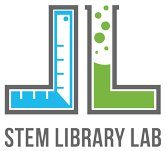by Callie Oliver | Jan 3, 2019
(UE.PS1A.a) Matter of any type can be subdivided into particles that are too small to see, but even then the matter still exists and can be detected by other means. A model showing that gases are made from matter particles that are too small to see and are moving...
by Callie Oliver | Jan 3, 2019
(UE.ESS3B.a) A variety of natural hazards result from natural processes. Humans cannot eliminate natural hazards but can take steps to reduce their impacts.
by Callie Oliver | Jan 3, 2019
(UE.ESS3A.a) Energy and fuels (fossil fuels, wind energy, solar energy, hydroelectric energy) that humans use are derived from natural sources, and their use affects the environment in multiple ways. Some resources are renewable over time, and others are not.
by Callie Oliver | Jan 3, 2019
(UE.ESS2E.a) Living things affect the physical characteristics of their environment.
by Callie Oliver | Jan 3, 2019
(UE.ESS2B.a) The locations of mountain ranges, deep ocean trenches, ocean floor structures, earthquakes, and volcanoes occur in patterns. Most earthquakes and volcanoes occur in bands that are often along the boundaries between continents and oceans. Major mountain...

